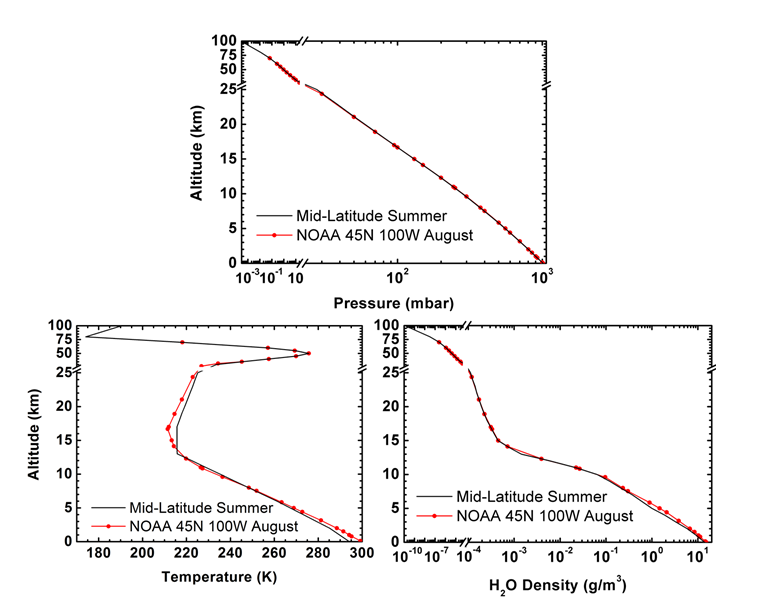The Atmosphere Generator Toolkit (AGT) is a separate program that supplements MODTRAN with new atmospheres from historical and radiosonde data. It provides MODTRAN6 users the ability to input custom atmospheres into MODTRAN in a straightforward manner. The command-line tool must be called with either location (latitude, longitude, date, and time) or radiosonde data. The AGT writes the custom atmosphere in either the form of MODTRAN legacy (tape5) CARD 2C1 inputs, or as text for a MODTRAN6 JSON input file.
The radiosonde AGT input can be either post-processed or raw data. A raw radiosonde typically consists of several thousand lines (or more) of altitude dependent pressures, temperatures, and relative humidities, ranging from the near ground level to about 30 km. Altitude gaps or noisy profiles are common. A post-processed radiosonde typically consists of processed measurements at 100's (not thousands) of altitudes. Typically this data extends to 25-30 km, with fewer missing data points and minimal noise. As examples, NOAA/ERSL and The University of Wyoming both maintain actively updated collections of post-processed radiosondes. File formats are not consistent between data sources; the AGT understands the three most common file formats and regularizes the input stream prior to processing the data for usage within MODTRAN.
Long-term time-averaged global data is available from a database maintained by NOAA in the form of the NCEP/NCAR Reanalysis Monthly Means and Other Derived Variables. This publicly available database contains long-term time-averaged data sets covering the entire globe on a 2.5 degree latitude by 2.5 degree longitude grid at 17 pressure levels that span from ground level to an approximate altitude of 30 km. Temperature and geopotential height data are present at all levels, while relative humidity is only available from the ground to an approximate altitude of 9 km. The long-term monthly data covers 12 months averaged from January 1948 to present. The four times daily data covers covers the globe at 6 hour intervals averaged from 1981-2010.
